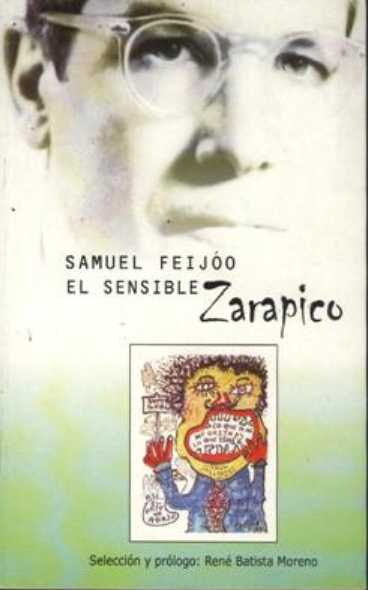4.1.1.22.1 The beginnings of Samuel Feijóo’s poetic career (1914 – 1992)

Scholars of Feijoose’s poetic work have almost unanimously agreed in considering his collection of poems “Camarada Celeste” as the first of significance for national lyric poetry; however, it is necessary to refer to his previous forays into poetry, which shaped a particular sensibility with naturalistic roots, which would germinate with noteworthy poetic inspiration in the aforementioned collection of poems.
This period includes several collections of poems, starting with the publication of “El pájaro de las soledades” (The Bird of Solitudes), which also include “Segura estancia” (Safe Stay), “Jiras guajiras” (Guajiras), “Segajo joven” (Young Branches), “Las albas” (Albas), “Los crepúsculos” (Crepuscles), “Apuntes” (Notes), “La pequeña armonía” (Small Harmony) and “Tenue otoño” (Tenue Autumn), in which a verbal overflow beyond the traditional schools of lyricism and the theme of the relationship of the human with the natural landscape and other forms of life are already present.
Although these lyrical collections, or collections of poems that sometimes included several of them, intertwine themes and subthemes from various areas of reality, nature occupies a primordial place as the radiating center of the poet’s lyrical life and the repository of death as a final offering of man, a fertile fertilizer for his physical clothing.
From the perspective of literary currents, we can see the continuity of the peasant trope, of the so-called criollismo, which reclaimed obliterated areas of the national. Although Feijóo is not primarily a poet with a social pulse, the theme of poverty, treated within the context of the phenomenon rather than with a politically probing intent, is present in some of these works, which links it to the concerns of the time, albeit tangentially.
The avidity for the natural and a neo-romantic tone that would be more determined by his worldview than by a purely literary heritage are already present in these scattered pages of Feijóo’s work, in which his fundamental lyrical concerns are outlined; although it must be said that the poet was rather characterized by an immediate understanding, a perception, in which the natural would constitute a support from the remote era of his first republican verses until his legacy after the Triumph of the Revolution.
The Cuban countryside was captured in these pages, which, from the perspective of poetic craftsmanship, demonstrate Feijóo’s mastery of the classic forms of the sonnet and the décima, so amenable to Creole themes; free verse allows him to capture the unbridled poetic sensibility in the fruitful twists and turns of the landscape; but in any case, he was not characterized by perfectionist exquisiteness of form.








